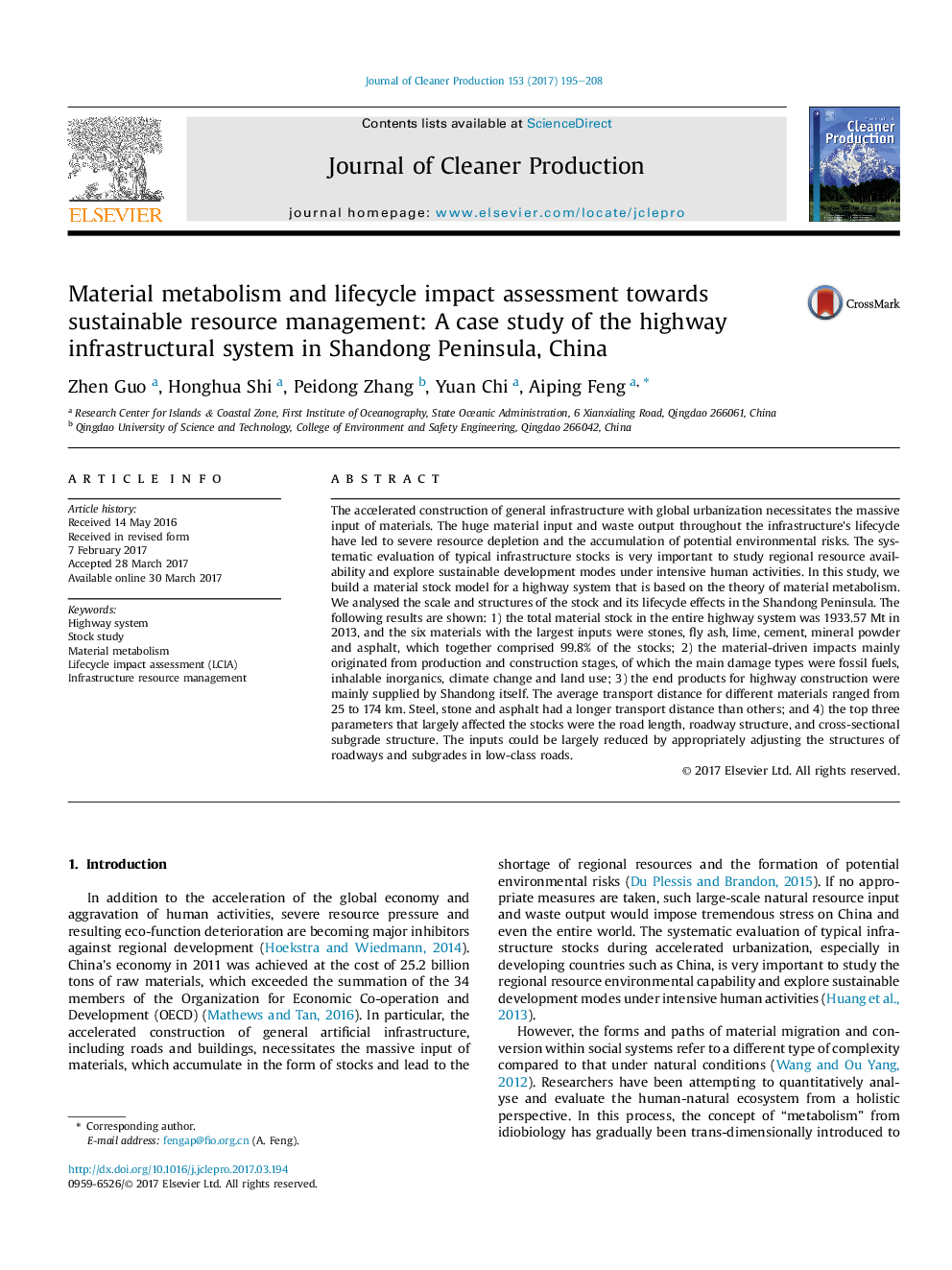ترجمه فارسی عنوان مقاله
متابولیسم مواد و بررسی تأثیرات چرخه زندگی به سوی مدیریت منابع پایدار: مطالعه موردی سیستم زیربنایی بزرگراه شبه جزیره شاندونگ، چین
عنوان انگلیسی
Material metabolism and lifecycle impact assessment towards sustainable resource management: A case study of the highway infrastructural system in Shandong Peninsula, China
| کد مقاله | سال انتشار | تعداد صفحات مقاله انگلیسی |
|---|---|---|
| 95278 | 2017 | 14 صفحه PDF |
منبع

Publisher : Elsevier - Science Direct (الزویر - ساینس دایرکت)
Journal : Journal of Cleaner Production, Volume 153, 1 June 2017, Pages 195-208

